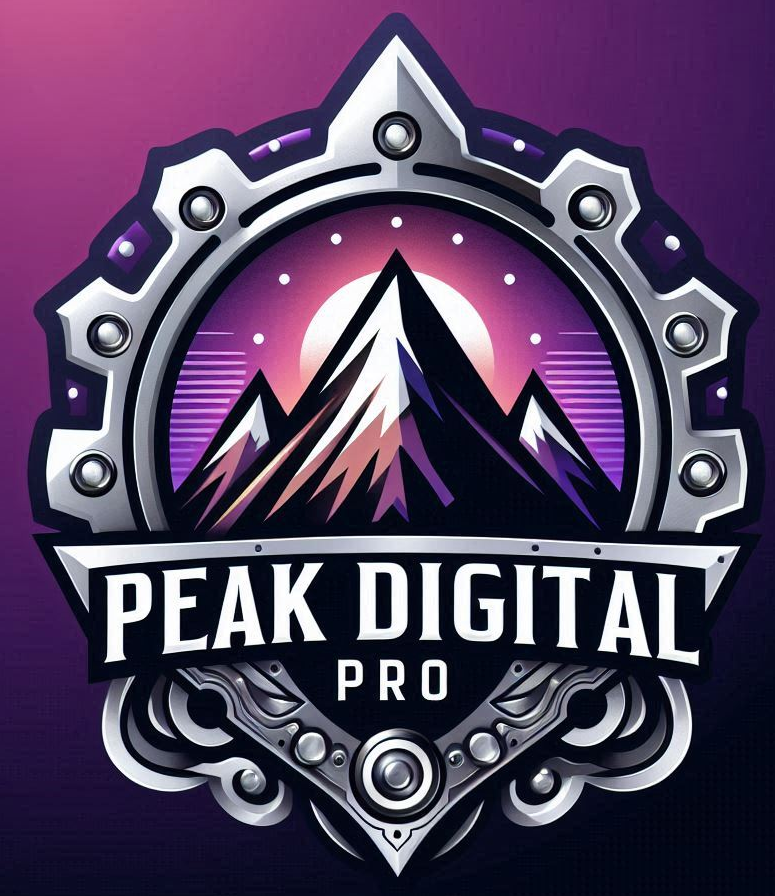Improving Website Conversion: Boost Your Sales Effectively
Most business websites attract plenty of visitors but struggle to turn those clicks into real customers. The average website conversion rate is only about 2 percent , which means almost everyone who lands on your site leaves without taking action. Surprising as it sounds, the right website tweaks can double or even triple your conversions without any extra advertising.
Table of Contents
- Step 1: Assess Your Current Website Performance
- Step 2: Identify Your Target Audience And Their Needs
- Step 3: Optimize Your Website Design And User Experience
- Step 4: Craft Compelling Calls To Action
- Step 5: Implement A/B Testing For Continuous Improvement
- Step 6: Analyze Results And Make Data-Driven Adjustments
Quick Summary
| Key Point | Explanation |
|---|---|
| 1. Assess website performance metrics | Analyze bounce rate, conversion rate, and user behavior to identify barriers affecting sales. |
| 2. Understand your target audience | Create detailed audience personas to tailor your strategies around their motivations and needs. |
| 3. Optimize website design and UX | Ensure fast loading times, clear navigation, and a professional look to enhance user engagement. |
| 4. Craft compelling calls to action | Use action-oriented language and strategic placement to drive user engagement and conversions. |
| 5. Implement A/B testing continuously | Test variations of website elements to make data-driven decisions for ongoing optimization efforts. |
Step 1: Assess Your Current Website Performance
Improving website conversion starts with a comprehensive evaluation of your current digital performance. This critical first step helps you understand how visitors interact with your website and identifies potential barriers preventing them from becoming customers. Think of this assessment as a diagnostic checkup for your online business presence.
Begin by accessing your website’s Google Analytics or similar web analytics platform. These tools provide deep insights into user behavior, revealing key metrics that indicate your site’s conversion potential. Look closely at fundamental performance indicators such as bounce rate , average time on page , and conversion rate . A high bounce rate suggests visitors are leaving quickly, which typically signals that your website isn’t meeting user expectations or effectively communicating your value proposition.

Learn more about website performance optimization by understanding how different elements impact user engagement. Focus on gathering data across multiple dimensions:
- Total website visitors
- Traffic sources
- User demographics
- Page load speeds
- Mobile responsiveness
Carefully analyze these metrics to pinpoint specific areas needing improvement. For instance, if mobile users have a significantly higher bounce rate compared to desktop visitors, this indicates a potential design or functionality issue that could be hindering conversions. Pay special attention to your most critical pages, such as product pages, landing pages, and contact forms. These are your primary conversion points and deserve meticulous examination.
Successful assessment means developing a clear, data driven understanding of your current website performance. You should emerge from this step with a comprehensive report detailing strengths, weaknesses, and specific opportunities for enhancing user experience and driving more conversions.
Here is a checklist table summarizing the key actions to verify you have successfully assessed your website performance at Step 1. Use this table to ensure all evaluation components are covered before moving forward.
| Action Item | Description | Completed? |
|---|---|---|
| Review Google Analytics metrics | Analyze bounce rate, conversion rate, average time on page | |
| Identify high-exit pages | Find which pages have high drop-off rates | |
| Analyze traffic sources | Determine where your visitors are coming from | |
| Evaluate mobile responsiveness | Ensure site functions well on mobile devices | |
| Check page load speeds | Test and record website speed across devices | |
| Assess primary conversion points | Review key pages like product, landing, and contact forms | |
| Prepare a summary report | Compile findings highlighting strengths and weaknesses |
Step 2: Identify Your Target Audience and Their Needs
Understanding your target audience is crucial to improving website conversion. This step moves beyond generic assumptions about potential customers and helps you develop a laser focused strategy that speaks directly to the people most likely to purchase your products or services. Your goal is to create detailed audience personas that reveal not just demographic information, but deeper insights into their motivations, challenges, and decision making processes.
Start by examining your existing customer data through tools like Google Analytics, customer surveys, and sales records. Look for patterns in age, location, income level, professional background, and purchasing behaviors. Explore advanced audience targeting strategies to refine your understanding of who your ideal customers truly are. Pay special attention to the pain points and desires that drive their purchasing decisions.
Consider creating 2-3 distinct audience personas that represent your most common customer types. Each persona should include:
- Detailed demographic information
- Professional background
- Key challenges and goals
- Typical online behavior
- Preferred communication channels
Most businesses discover that their actual target audience differs significantly from their initial assumptions. This process requires honest introspection and a willingness to challenge preconceived notions about your customers. Conduct interviews with existing customers, analyze competitor audiences, and use social media insights to build a comprehensive picture. Look for common threads that connect potential customers and reveal their underlying motivations.
A successful audience identification process transforms your website from a generic digital brochure into a targeted conversion machine. You will know you have completed this step effectively when you can articulate exactly who your ideal customer is, what problems they need solved, and how your product or service provides the perfect solution to their specific needs.
This table outlines the main elements of a detailed audience persona, helping you organize and compare customer profiles as you define and refine your target market.
| Persona Element | Example Details | Notes on Relevance |
|---|---|---|
| Demographics | Age, location, income | Guides messaging and targeting |
| Professional Background | Occupation, industry | Influences product positioning |
| Challenges & Goals | Pain points, objectives | Shapes solutions and value offering |
| Online Behavior | Browsing habits, preferences | Helps tailor website experience |
| Communication Channels | Email, social, chat preference | Informs communication approach |
Step 3: Optimize Your Website Design and User Experience
Website design and user experience are critical factors that directly impact conversion rates. This step focuses on transforming your website from a simple online presence into a powerful, intuitive conversion engine that guides visitors seamlessly toward making a purchase. Your design must communicate professionalism, build trust, and make navigation incredibly simple for potential customers.
Begin by conducting a comprehensive visual and functional audit of your website. Page load speed is paramount – even a one second delay can significantly reduce user engagement. Use tools like Google PageSpeed Insights to analyze and improve your website’s performance across desktop and mobile platforms. Discover advanced strategies for enhancing user experience that can dramatically increase your conversion potential.
Focus on creating a clean, professional design with strategic elements that guide user attention. Your website should have:
- Clear, prominent call-to-action buttons
- Intuitive navigation menu
- Mobile responsive design
- High quality, relevant imagery
- Consistent color scheme and branding
Pay special attention to your website’s information hierarchy . The most critical information should be immediately visible, with secondary details accessible through clear, logical navigation paths. Implement a color scheme and typography that enhances readability and creates a professional, trustworthy appearance. Ensure that your design elements not only look appealing but also serve a functional purpose in guiding users toward conversion.

Verify your optimization efforts by tracking key user experience metrics. A successful redesign will show increased time on site, reduced bounce rates, and improved conversion rates. Remember that website optimization is an ongoing process – continuously gather user feedback, conduct A/B testing, and be prepared to make incremental improvements that enhance your digital customer experience.
Step 4: Craft Compelling Calls to Action
Calls to action represent the critical bridge between website visitor interest and actual conversion. These strategic prompts transform passive browsing into active engagement, compelling potential customers to take the next step in their purchasing journey. Your calls to action must be clear, compelling, and strategically positioned to maximize their conversion potential.
Designing effective calls to action requires a nuanced understanding of psychological triggers and visual communication. Button placement , color contrast , and action-oriented language are crucial elements that can significantly impact user response. Learn advanced techniques for creating high-converting CTAs that speak directly to your target audience’s motivations and desires.
Consider implementing calls to action that feature:
- Urgent, action-driven language
- Clear value propositions
- Minimal friction in the conversion process
- Visually distinctive design elements
- Personalized messaging aligned with audience personas
Each call to action should communicate an immediate, tangible benefit to the user. Instead of generic phrases like ‘Click Here’, use specific, benefit-driven language such as ‘Claim Your Free Consultation’ or ‘Start Saving Money Today’. The most effective CTAs create a sense of urgency and excitement, making the next step feel not just possible, but irresistible.
To verify the effectiveness of your calls to action, track key performance metrics like click-through rates, conversion rates, and user engagement. A successful CTA strategy will show measurable improvements in these areas, transforming your website from a passive information platform into an active sales tool that consistently drives business growth.
Step 5: Implement A/B Testing for Continuous Improvement
A/B testing represents the most powerful method for systematically improving website conversion rates. This scientific approach allows you to make data driven decisions by comparing two variations of a webpage element to determine which performs better.
Think of A/B testing as a strategic experiment that removes guesswork and replaces it with concrete, measurable insights about your website’s performance.
Start by identifying specific elements you want to test. Potential testing candidates include headline text, call-to-action button colors, page layouts, image selections, and form designs. Explore comprehensive strategies for optimization testing that can dramatically enhance your conversion potential. Select one element at a time to ensure clear, actionable results. Most businesses find that small, targeted changes can yield significant improvements in user engagement and conversion rates.
Consider these critical guidelines for effective A/B testing:
- Test only one variable at a time
- Ensure statistically significant sample sizes
- Run tests for an appropriate duration
- Use reliable testing platforms
- Measure precise conversion metrics
Implement your A/B tests using tools like Google Optimize, Optimizely, or VWO. These platforms allow you to create test variations, split traffic between different versions, and track performance metrics automatically. Pay close attention to key indicators such as click-through rates, time on page, and actual conversion completions. The goal is not just to collect data, but to transform that data into actionable improvements that directly impact your bottom line.
Successful A/B testing is an ongoing process of incremental optimization. You will know you have mastered this step when you can confidently make website improvements based on empirical evidence, continuously refining your digital presence to maximize user engagement and conversion potential.
Step 6: Analyze Results and Make Data-Driven Adjustments
Analyzing website performance data transforms raw numbers into actionable strategic insights that can dramatically improve your conversion rates. This critical step moves beyond simple data collection, focusing on interpreting complex user behavior patterns and translating those findings into meaningful website improvements. Your goal is to understand not just what is happening on your website, but why it is happening.
Begin by consolidating data from multiple sources including Google Analytics, A/B testing results, user behavior tracking, and conversion funnel analytics. Key performance indicators will reveal nuanced details about user interactions, helping you pinpoint precise areas for optimization. Discover advanced techniques for interpreting marketing data that can unlock unprecedented insights into your digital performance.
Pay special attention to these critical metrics:
- Conversion rate percentage
- Average time on page
- Bounce rate
- User flow through conversion funnel
- Traffic source effectiveness
Successful data analysis requires a holistic approach that goes beyond surface level numbers. Look for patterns and correlations that might not be immediately obvious. For instance, a high bounce rate on mobile devices might indicate design issues, while unexpected drop-off points in your conversion funnel could suggest confusing navigation or unclear messaging. Each data point tells a story about user experience and potential barriers to conversion.
Verify the effectiveness of your analysis by developing a clear action plan with specific, measurable adjustments. The most successful websites treat data analysis as an ongoing process of continuous improvement, constantly refining their approach based on emerging user behavior trends. Your ultimate goal is creating a dynamic, responsive website that adapts seamlessly to user needs and preferences.
Ready to Turn More Visitors Into Customers? Let Peak Digital Pro Guide Your Growth
You have explored the step-by-step strategies for achieving real website conversion success, from assessing analytics to crafting powerful calls to action. But knowing exactly how to diagnose weak points, identify your audience, and use A/B testing for greater impact is only the first step. The real challenge is transforming these insights into live results that grow your business and place you ahead of local competitors.

At Peak Digital Pro , we deliver the expert support your business needs to unlock every opportunity in your digital presence. Our Colorado Springs-based team specializes in web development that eliminates conversion barriers, SEO optimization that brings qualified local traffic to your site, and AI-driven strategies to elevate your brand. Let us show you how to streamline user experience, design compelling CTAs, and embrace a data-driven approach for higher conversion rates. Do not leave profits on the table. Contact us today and let’s boost your sales together with proven solutions tailored to your business goals.
Frequently Asked Questions
What is website conversion, and why is it important?
Website conversion refers to the process of turning site visitors into customers or leads. It’s important because higher conversion rates directly impact your sales and business growth by maximizing the value of your website traffic.
How can I evaluate my current website performance?
To assess your current website performance, use tools like Google Analytics to analyze key metrics such as bounce rate, average time on page, and conversion rates. These insights help identify areas for improvement.
What are the essential elements for optimizing user experience on my website?
Key elements for optimizing user experience include a clean and intuitive design, fast page load speeds, clear navigation, quality imagery, and strategically placed call-to-action buttons that guide users seamlessly toward making a purchase.
What strategies can I use to create effective calls to action?
To create effective calls to action, use urgent and action-driven language, communicate clear value propositions, minimize friction in the conversion process, and ensure your CTAs are visually distinctive and aligned with your audience’s needs.
Recommended
-
[
Optimizing Website for Conversions: 2025 Guide for U.S. and Colorado Businesses
]( https://peakdigital.pro/2025/07/16/optimizing-website-for-conversions-2025-colorado-business )
-
[
How Websites Drive Sales: Key Strategies for Business Owners in 2025
]( https://peakdigital.pro/2025/06/28/how-websites-drive-sales-business-owners-2025 )
-
[
Creating Lead Forms: Boost Business Growth in 2025
]( https://peakdigital.pro/2025/07/12/creating-lead-forms-business-owners-2025 )
-
[
Optimizing Website Forms: Boost Conversions for Colorado Businesses
]( https://peakdigital.pro/2025/08/14/optimizing-website-forms-colorado-businesses )







